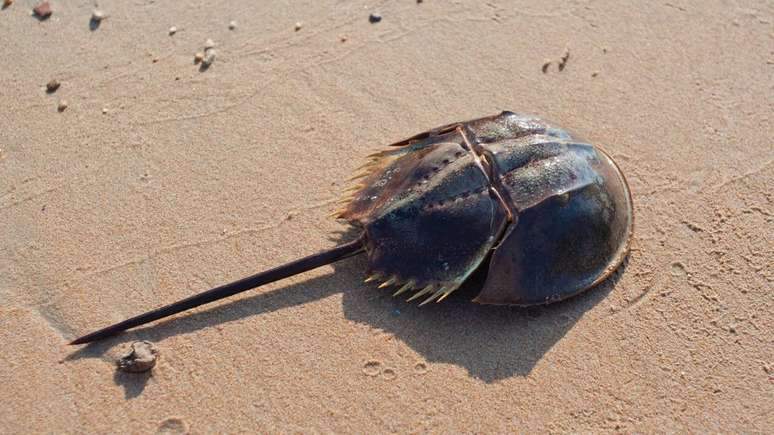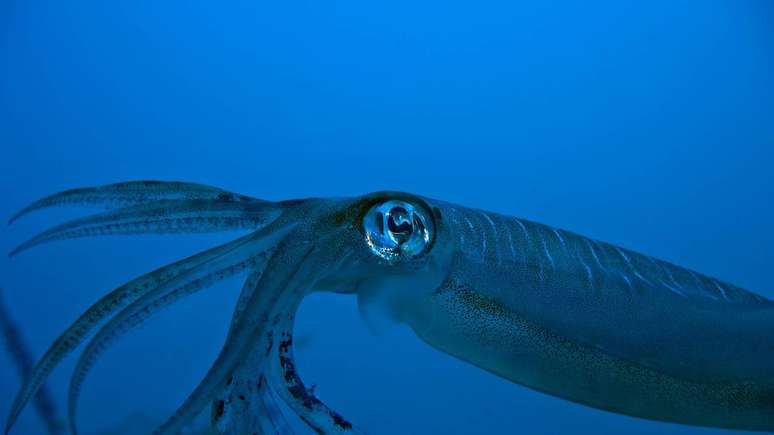Find out why octopuses and squid have blue blood! Understand the difference between the blood of these animals and the secrets of hemocyanin
The universe of marine animals contains numerous surprising curiosities, and one of these is linked to the color of the blood of species such as octopuses and squid. These beings belong to the mollusc group and have a circulatory system different from that observed in mammals. Its vital fluid, instead of having red blood, a consequence of hemoglobin, is blue, a characteristic that has attracted the attention of scholars and curious people for decades.
The explanation for the blue hue of the blood of these animals lies in the type of molecule responsible for transporting oxygen in their body. While humans use a protein called hemoglobin, which is rich in iron, octopuses and squid rely on another substance: hemocyanin. This biochemical difference is critical to understanding the reasons for this unique coloration and its adaptive advantages in the marine environment.
What is hemocyanin and how does it work?
It is a protein present in some invertebrates, especially molluscs and arthropods. Unlike hemoglobin, which uses iron in its molecular structure, hemocyanin contains copper in its nucleus. When hemocyanin binds to oxygen, a blue-purple complex is formed, which accounts for the peculiar color of the blood of these creatures.
Under natural conditions, hemocyanin circulates diluted in the plasma of these species, since these animals generally have an open circulatory system. The evolutionary choice for this pigment is mainly linked to the environment in which they live. In cold regions or with low levels of dissolved oxygen, such as in the deep ocean, hemocyanin is more efficient at transporting oxygen than hemoglobin.
Why is blue blood beneficial for octopuses and squid?
The use of hemocyanin offers benefits to octopuses and squids in the face of extreme ocean conditions. The copper present in the molecule allows the blood of these animals to remain efficient even when the sea temperature is very low or the oxygen content in the water is reduced, situations common at great depths.
- Greater efficiency in cold environments: Hemocyanin does not lose its oxygen transport function at low temperatures.
- Resistance to low oxygenation: It allows these animals to survive in places where the presence of species that depend on hemoglobin would be unachievable.
- Adaptation to different habitats: Facilitate the occupation of diverse environments, from shallow coral reefs to abyssal areas of the ocean.
In the case of octopuses, for example, blood circulation and hemocyanin help ensure survival in situations of great physical effort, such as fast escapes from predators, using jets of water for propulsion.
What other animals have blue blood?
In addition to octopuses and squids, other species also have this unique hue in their blood. The presence of hemocyanin as a respiratory pigment is observed in numerous marine and, to a lesser extent, terrestrial invertebrates. Among the best-known examples are:
- Horseshoe crab
- Some types of snails
- Cameroon
- Lobsters
- Some arachnids

In these species the function of hemocyanin remains practically the same: to ensure the efficient transport of oxygen in situations where hemoglobin would be less effective. The diversification of respiratory pigments reflects the different evolutionary strategies adopted by organisms to thrive in their habitat.
What is the difference between blue and red blood?
A common doubt concerns the contrast between the blood of these invertebrates and that of humans. The answer lies in the chemistry of the pigments: hemoglobin it becomes red when it binds to oxygen due to the presence of iron, while hemocyanin, incorporating oxygen, acquires a bluish hue due to the presence of copper.
- Hemoglobin (iron + oxygen): red
- Hemocyanin (copper + oxygen): blue
These differences not only affect blood color, but signal specific biochemical adaptations to different environmental situations. The blue of the blood of octopuses and squids is, therefore, more than a peculiarity: it is an evolutionary achievement essential for their survival in the most varied conditions of the seas.
Source: Terra
Ben Stock is a lifestyle journalist and author at Gossipify. He writes about topics such as health, wellness, travel, food and home decor. He provides practical advice and inspiration to improve well-being, keeps readers up to date with latest lifestyle news and trends, known for his engaging writing style, in-depth analysis and unique perspectives.






![A Better Life Preview: What’s in store for Tuesday, October 21, 2025 Episode 446 [SPOILERS] A Better Life Preview: What’s in store for Tuesday, October 21, 2025 Episode 446 [SPOILERS]](https://fr.web.img6.acsta.net/img/fe/c7/fec79870332faf9ba9cf244248ec57c8.jpg)


